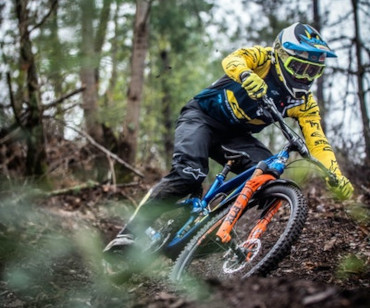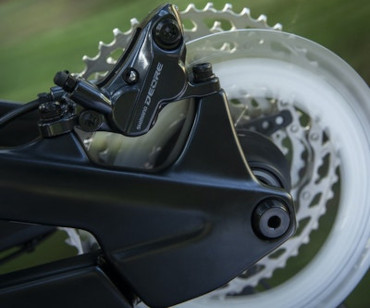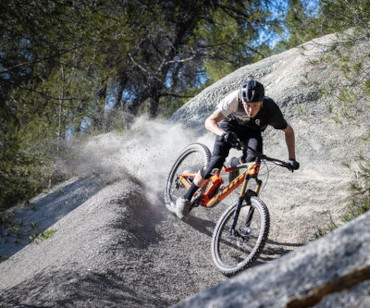FOUR PISTONS OR TWO? POWER OR WEIGHT?
When it comes to choosing which SHIMANO MTB brakes to have, there’s plenty of options but no dramas.
Choosing the equipment for your bike can seem like a never-ending task; a circle of questions and options and decisions. What do I need; what do I want; what can I afford?
If you're riding or racing downhill, four-piston brakes are a given. These powerful brakes were born from and developed in this discipline and SHIMANO's SAINT and ZEE four-piston brakes are perfect for the gnarly task at hand.
However, if you're choosing from the XTR, DEORE XT, SLX or DEORE brakes then you have the option of two or four-piston brakes.
SHIMANO’s trickle down technology model means that each of these groupsets uses the same technologies, just engineered at different price points. So whether you are choosing the top-end XTR brakes or the more entry-level DEORE brakes, the reasoning behind opting for two or four-piston option is the same and the performance will be similar.
If you’re unsure which option is for you, the guys at Global Mountain Bike Network have put together this mega film explaining the differences. Hit play for the brake lesson and stay for the brilliant riding shots!

If you got lost in the beauty of the Shropshire hills and didn’t quite catch all the information, here’s a round-up of the what, who, where, when and why of the 2-pot versus 4-pot brake choice:
TWO PISTON
What?: It's not a trick question; quite simply, it's two pistons (one on each side of the calliper). Fewer pistons means smaller brake pads and thus less contact area on the disc. It also means less weight, with the top-end XTR two piston calliper coming in at just 87g!
Who?: Cross-country riders and racers. The lightweight brake suits a lighter weight bike and rider. Think Maja Wloszczowska and Mathias Fluckiger.
Where?: Cross-country style riding can be confined to the race course or involve long days in the hills. It can be short, aggressive descents, flowing single track or fast fire-roads. The 2-pot brakes will deal with a huge range of riding, but will begin to experience brake fade when the descents get steep and prolonged.
When?: When bigger isn’t better, and less is more! When you want to do some more trail-style riding, you can always stick on a bigger rotor to help with stopping power.
Why?: The 2-pot brakes have their roots firmly planted in XC. The big reason why to choose 2-pot is weight. For the needs of typical cross-country riding, the power offered is more than enough to make the lightweight brake a real advantage.
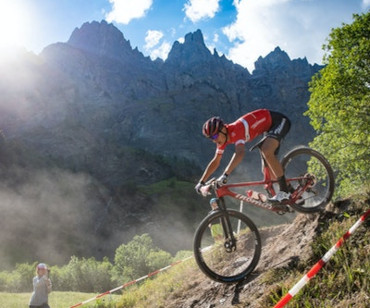
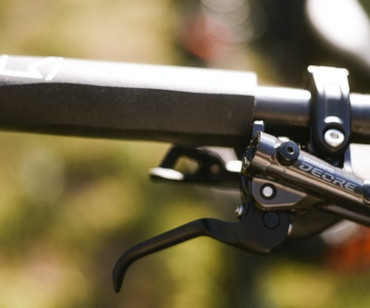
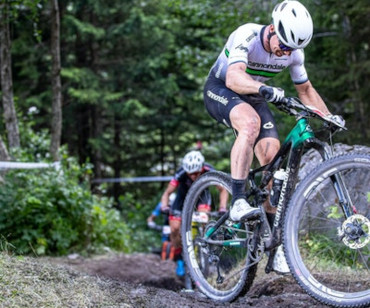
FOUR PISTON
What?: A disc brake system with the dual-diameter opposed-piston caliper design has differently sized pistons in front and in the rear. The system adopts a power transfer system in which the disc brake rotor is pressed by the smaller sized piston at the entrance of the disc brake rotor intake and also by the more powerful larger sized piston at the back. This prevents the wobbling motion of the disc brake rotor and reduces noises significantly.
The 4-piston caliper also allows a wider contact area for the disc brake rotor while keeping the size compact, and the efficient location of pads is adjusted as necessary to stabilize the pressure.
Who?: Those riders looking for more gnarly trails, more emphasis on the downhills, and more braking power. Trail riders and Enduro racers rely on these powerful 4-pots. Think Martin Maes and Jill Kiltner.
Where?: The 4-pot brakes come into their own when the mountains call. Long, steep trails that require constant and consistent powerful braking.
When?: When stopping power is paramount and weight is not decisive. When you’re not sure when the end of the downhill will come but you need to know that your brakes will still be working faultlessly by then!
Why?: The reason you would want 4-pot brakes is power! You need power if you’re a heavier rider on a heavier bike experiencing bigger speeds over longer descents.
